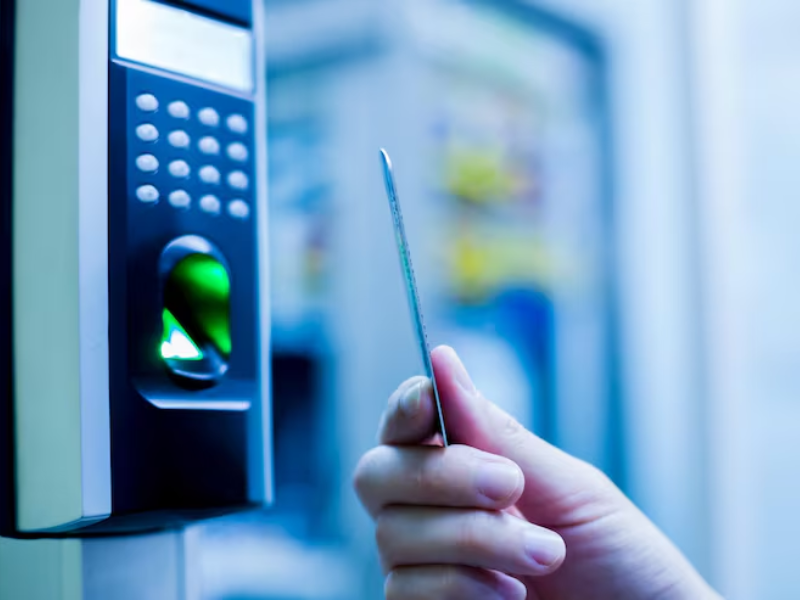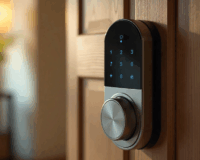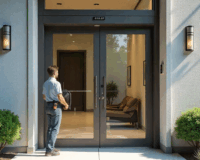In an increasingly connected world, security and convenience are no longer competing priorities — they work hand in hand. Whether you’re protecting a private residence, a gated community, or a large commercial facility, access control systems are now essential tools for managing who can enter, when they can enter, and how they can gain access. Gone are the days of relying solely on keys and padlocks. Modern access control integrates smart electronics, cloud software, and mobile apps to create an intelligent security network that enhances both safety and efficiency.
With the right access control solution, property owners can streamline operations, safeguard sensitive areas, and create a seamless experience for residents, employees, and visitors. This guide explores the most common technologies — including keypad access, RFID readers, and app-based control — and how to choose, install, and maintain these systems for optimal performance.
What Is Access Control?
At its core, access control is a security process that regulates who can enter or exit a location. It goes beyond simple locks and keys—modern systems combine electronics, sensors, and software to verify credentials and control entry points in real time. In automated environments, these systems are linked to gates, doors, barriers, or turnstiles, ensuring smooth operation without human intervention.
Access control systems typically consist of three main components:
-
Identification – recognizing who is requesting access.
-
Authentication – verifying if that person or device is authorized.
-
Authorization – granting or denying access based on permissions.
These systems can be standalone (for a single entry point) or networked across multiple sites, enabling remote management and detailed reporting. Today’s access control technology also supports integration with CCTV cameras, alarms, and intercoms, providing a complete security ecosystem.
Looking to enhance automation? Learn how to connect access control with your sliding gate system

Types of Access Control Systems
Different environments require different types of access control systems. Choosing the right model depends on your security goals, user volume, and budget. Below are the main categories used in gate and door applications:
Keypad Access Control
Keypads are among the most common and affordable access solutions. Users simply enter a numeric PIN to unlock the gate or door.
-
Advantages: Simple to install, cost-effective, and ideal for small businesses or residential properties.
-
Disadvantages: Codes can be shared or forgotten, reducing security if not updated regularly.
Modern keypads are often weatherproof and illuminated for outdoor use, making them perfect for gate automation and external access points.
RFID Access Control
RFID (Radio Frequency Identification) systems use tags or cards that communicate with a reader via radio waves. When a registered tag is presented, the reader signals the gate or door to unlock.
-
Advantages: Contactless operation, fast entry, and excellent for managing high user traffic.
-
Disadvantages: Tags can be lost or stolen, though permissions can be quickly revoked.
RFID is ideal for car park gates, commercial buildings, and apartment complexes where users need frequent, hands-free access. Advanced RFID systems even allow tiered permissions—granting certain users access only during specific times or to designated areas.
App-Based Access Control
App-based access control systems leverage smartphones as digital keys. Through Wi-Fi, Bluetooth, or cloud-based platforms, authorized users can open gates or doors with a simple tap or voice command.
-
Advantages: High convenience, remote access control, and easy integration with smart home ecosystems like Google Home or Alexa.
-
Disadvantages: Requires reliable connectivity and cybersecurity measures to prevent hacking.
This modern solution is rapidly gaining popularity among homeowners and property managers who value flexibility and real-time control. For instance, if you’re expecting a visitor or delivery, you can grant temporary access remotely through the mobile app.
Biometric Access Control
Biometric systems use fingerprints, facial recognition, or iris scans to verify identity. These systems offer the highest level of security because credentials cannot be easily duplicated.
-
Advantages: Extremely secure, no cards or codes required.
-
Disadvantages: Higher installation costs and potential privacy concerns.
Biometric access control systems are often found in high-security areas such as data centers, laboratories, and executive offices.
Intercom & Video Access Control
Combining audio and video verification adds another layer of safety. Visitors can be identified before granting entry, reducing the risk of unauthorized access.
These systems are often integrated with RFID or keypad units to create hybrid solutions suitable for residential estates, schools, and hospitals.
Integration with Automated Gates and Doors
The real power of access control systems emerges when they are integrated with automated gate systems and electronic door locks. Instead of manually unlocking a gate, users simply authenticate themselves, and the system automatically triggers the gate motor to open.
Integration allows for:
-
Centralized management – monitor and control multiple entry points from a single dashboard.
-
Audit trails – keep a digital record of all entries and exits for security tracking.
-
Enhanced safety – pair access control with safety sensors to prevent the gate from closing on vehicles or pedestrians.
-
Smart home compatibility – connect to automation hubs for full system control via smartphone or voice command.
When combined with CCTV and alarm systems, these integrations create a unified and intelligent security network suitable for homes, offices, and industrial sites.

Choosing the Right Access Control System
When selecting an access control system for your gate or door, consider the following factors:
-
Security Requirements – Assess how critical the access point is. For example, a residential gate may only need keypad access, while a data center may require biometric verification.
-
Number of Users – Larger organizations benefit from RFID or app-based systems that handle many credentials.
-
Environment – Outdoor gates need weatherproof components, while indoor doors can use simpler systems.
-
Integration Needs – Determine whether your system must connect with other security devices or automation networks.
-
Maintenance and Support – Choose systems that are easy to maintain and come with reliable technical support.
Always ensure that your system meets local standards, such as those defined by AS 60839.11.1:2019 (Electronic Access Control Systems) for Australian compliance.

Benefits of Access Control Systems
Adopting an advanced access control system offers numerous advantages beyond simple security. These include:
-
Improved safety – Only authorized personnel can enter restricted zones.
-
Convenience – Eliminates the need for physical keys.
-
Scalability – Easily add new users or expand to multiple access points.
-
Remote management – Control and monitor access from anywhere.
-
Data insights – Generate reports on entry frequency, user behavior, and potential security breaches.
In multi-user environments such as offices, apartments, or gated communities, access control simplifies administration and enhances user experience.

Security Best Practices for Access Control Systems
Even the most advanced access control system can only perform at its best when supported by strong security practices. Beyond installation, maintaining a secure environment involves ongoing monitoring, user management, and system updates. Whether your property uses keypad, RFID, or app-based access, following these best practices helps ensure lasting protection and compliance.
Regularly Update Access Credentials
Stale or shared credentials are one of the most common vulnerabilities in access control management. Update PIN codes and deactivate lost RFID tags promptly to minimize unauthorized use. For app-based systems, revoke access immediately when employees or tenants leave.
Enforce Multi-Layer Authentication
Combine two or more methods of verification—such as PIN plus RFID, or card plus biometric scan—for sensitive areas. Multi-layer authentication significantly increases security by preventing breaches from stolen or cloned credentials.
Protect Network and Software Systems
For smart and cloud-based access control systems, network protection is critical. Use strong, unique passwords for admin portals, enable encryption for communication channels, and keep firmware and apps updated. Implement firewalls and intrusion detection systems to protect against cyber threats.
Manage User Permissions Carefully
Grant access only where necessary. For example, cleaning staff might only have access during certain hours, while managers can enter all zones. Periodically audit these permissions to remove outdated users and tighten security controls.
Integrate with Surveillance and Alarm Systems
Linking your access control system with CCTV cameras and intrusion alarms provides layered protection. When an unauthorized attempt is detected, the integrated system can trigger alerts, record video footage, and notify administrators instantly.
Conduct Routine Security Audits
Schedule periodic inspections and system tests to verify that all components — from card readers to mobile credentials — are functioning correctly. Reviewing access logs can also help identify unusual activity patterns, such as repeated access attempts at odd hours.
Train Users and Staff
Even the most sophisticated technology can’t compensate for poor user habits. Educate residents, employees, or contractors on how to use access control features responsibly — such as not sharing codes, reporting lost cards, and closing gates after use.
Back Up Data and Configuration Files
Regular backups ensure that access records and configuration settings can be restored in case of a power failure or system corruption. For cloud-based systems, verify that your provider uses secure data storage compliant with privacy regulations.
Combine Safety and Convenience
Security doesn’t mean sacrificing usability. The best access control systems strike a balance between strong protection and effortless operation. Choose systems with customizable permissions, automatic scheduling, and user-friendly interfaces that encourage consistent, secure use.
The Future of Access Control
The future of access control lies in integration, automation, and artificial intelligence. The next generation of systems will rely heavily on IoT (Internet of Things) connectivity, enabling real-time monitoring and predictive maintenance. Facial recognition, cloud access management, and AI-based behavior analytics will soon become standard.
Cloud-based access control is particularly transformative—it allows administrators to grant, revoke, or monitor access from anywhere in the world. Combined with mobile apps, this empowers property owners to stay in control, even when away from the premises.
Additionally, sustainability is becoming an important consideration. Solar-powered readers and energy-efficient electronics are emerging as eco-friendly solutions that align with green building standards.

Conclusion
From simple PIN keypads to cutting-edge smartphone and RFID systems, access control has evolved into a key pillar of modern security. Whether you’re managing a single residential gate or a large-scale industrial complex, access control systems provide the precision, convenience, and reliability needed to safeguard your property effectively.
Integrating these systems with automated gates, alarms, and cameras creates a seamless security ecosystem—one that enhances efficiency while reducing the risk of unauthorized access. Regular maintenance, software updates, and adherence to Australian standards ensure ongoing performance and compliance.
As technology continues to advance, access control will only become smarter, faster, and more secure. Now is the time to invest in a system that grows with your needs—bringing safety, simplicity, and control to your gates and doors.
Need reliable solutions for your property? Check our product recommendations for gate access control






